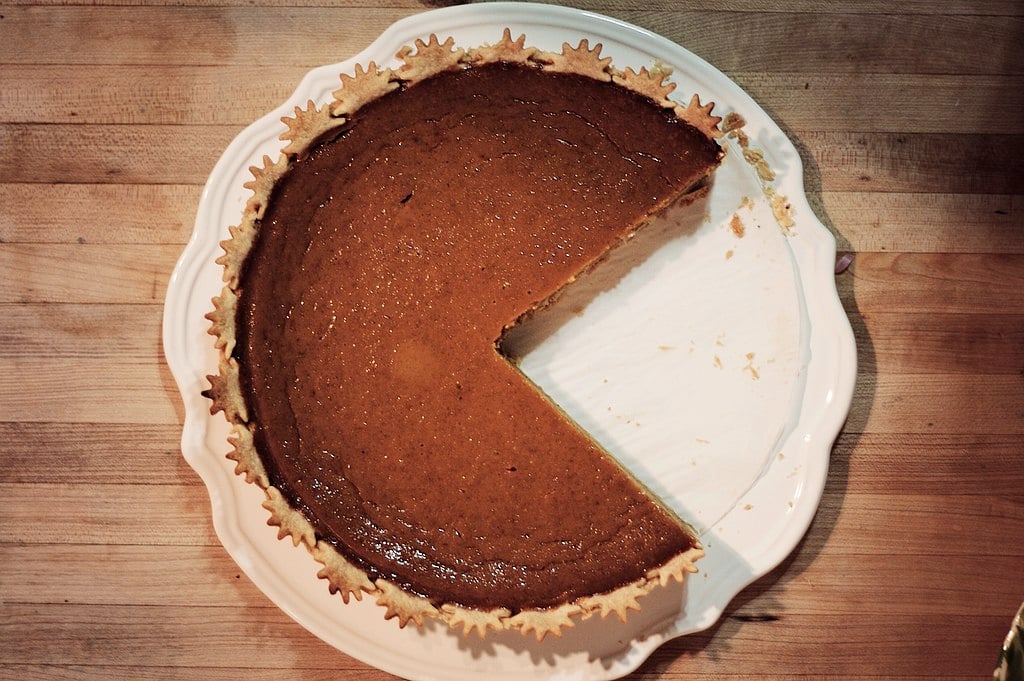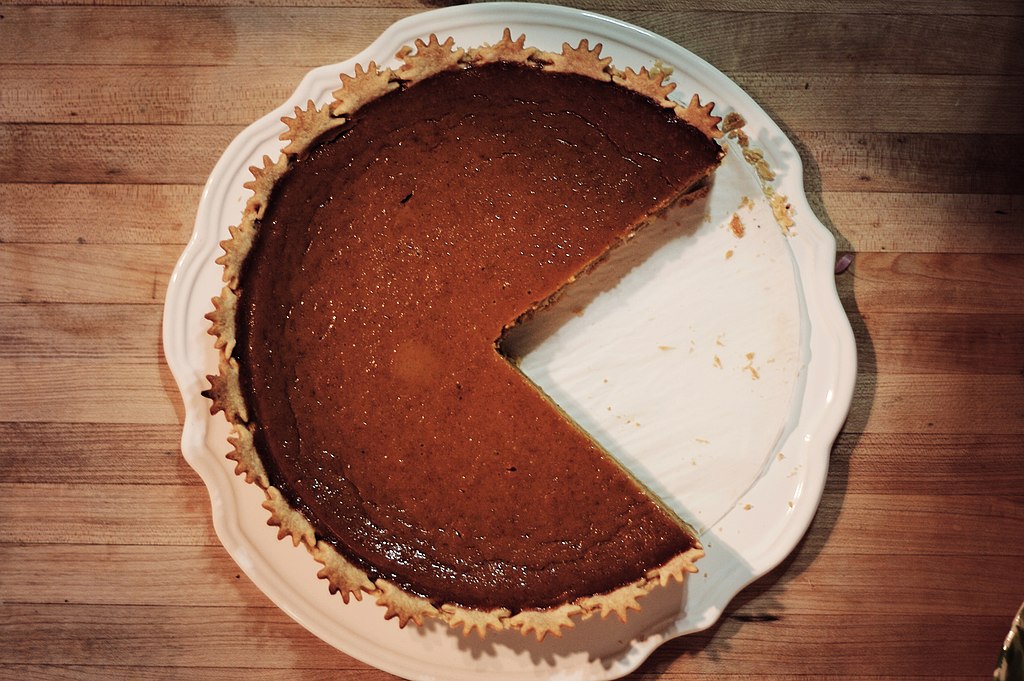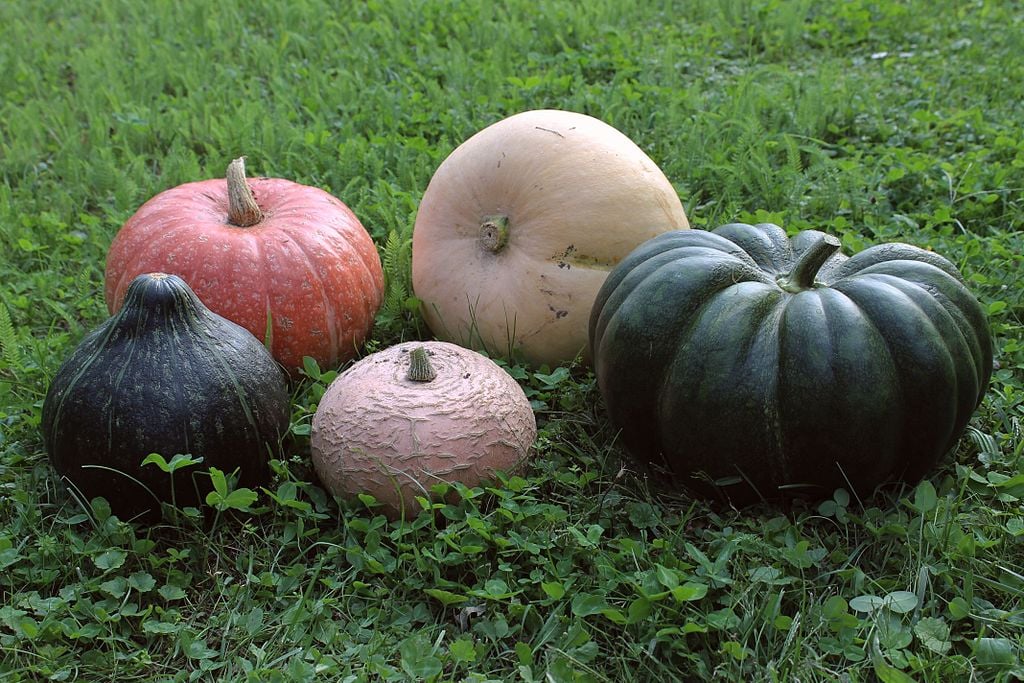

Although pumpkins are now grown and consumed in some form worldwide, they stem from North America. They feature so prominently on our Thanksgiving tables, usually in the form of pumpkin pie, that they are worth a bit of appreciation around the holidays.
No autumn would be the same without squash and pumpkins—the iconic American gourds that have been cultivated for thousands of years. Featuring in jack-o-lanterns, butternut squash and pumpkin soup, pumpkin pie, and a host of other fall staples, we do love our pumpkins.
Along with so many words we use today all over the world, the very word pumpkin may have Greek roots. According to the Oxford English Dictionary, the English word pumpkin is derived from the Ancient Greek word πέπων, pepon meaning ‘melon.’
According to this theory, the term transitioned through the Latin “peponem” and the Middle French “pompon” to the Early Modern English “pompion,” which was changed to pumpkin by 17th-century English colonists shortly after encountering pumpkins upon their arrival in what is now the northeastern United States.
An alternate derivation for pumpkin is the Massachusetts word ‘pôhpukun,’ meaning “grows forth round.” This term would likely have been used by the Wampanoag people in what is now Massachusetts when introducing pumpkins to English Pilgrims in the Plymouth colony.
The English word squash is also derived from a Massachusetts word, variously transcribed as ‘askꝏtasquash’ or in the closely-related Narragansett language ‘askútasquash.’
Nowadays, the biggest pumpkin festival in the entire world is held in Germany of all places. Hence, it is clear the pumpkin, in its many ramifications and tastes, is here to stay. But what did they look and taste like in the past, and how did they acquire those iconic, warm colors?
Pumpkins have existed in the Americas since before humans emigrated to these shores. Archaeologists believe that squash became a staple of the Meso-American diet approximately ten thousand years ago.
Logan Kistler, curator of archaeobotany at the Smithsonian’s National Museum of Natural History, states in Smithsonian Magazine, however, that they were a little different thousands of years ago. “Wild squashes are bitter and toxic, and have thin rinds,” he says.
He and other archaeobotanists examine the remains of plants and foods in order to understand how and when humans first cultivated and ate them as well as how humans changed the characteristics of plants over time.
He and his colleagues typically find remains of ancient foods after they have been burned, allowing them to maintain their natural shapes. Cooking fires are commonly found in ancient habitations.
Additionally, they can also glean information from having been dried, or desiccated, in caves. “That’s really great for preserving gourds and squashes because it preserves all the minute details, and we can extract DNA from those,” Kistler notes.

However, the opposite is also true, in which foods are preserved by becoming waterlogged. “At the bottom of a bog, things can preserve for tens of thousands of years,” he says, because there is much less oxygen there and there are fewer microbes, which would break down the foods.
Recently, Kistler and National Museum of Natural History archaeologist Bruce D. Smith made an unusual discovery. “We have 30,000-year-old mastodon dung deposits from Florida that have well-preserved squash seeds in them,” he explained; this is another way in which scientists can understand how plants were dispersed throughout an area.
The giant mastodons, living in North America for millennia, died out approximately eleven thousand years ago.
At that same time, calabashes, gourds which are also related to pumpkins, were being used by humans in Asia, Kistler says. They also show up in the Americas at about the same time and appeared in Africa a little later—possibly floating there atop ocean currents.
Kistlet maintains it would have taken about nine months for that to have occurred—certainly not out of the question for a gourd with a tough, heavy-watertight skin.
The scientist also notes that “they’re interesting because they’re not used for food—they’re tools.”

Early humans naturally started growing their own calabashes, most likely selecting for the use of them as containers.
Gourds such as these belong to the same species as edible vegetables such as butternut and summer squash. While gourds are planted for their use as containers, squash and their more orangey cousins, the pumpkins, were cultivated as food.
Squashes, belonging to the genus Cucurbita, are all native to the Americas, originating in Mexico approximately ten thousand years ago; before long, they were staples in the diet of the earlier Americans, who cultivated them for their many different characteristics.
However, domestication of foods, Kistler admits, is “a really fuzzy process. It’s not something that has a clear, definite beginning.”
What we do know is that over the years, they were adapted to any number of culinary uses by Native Americans.
Scientists have found evidence that squashes were cultivated even before the iconic American food maize, or corn by an incredible one thousand years. Soon, however, their fates became entwined, along with that of beans, another staple of the native peoples, who learned that the three crops of beans, squash, and corn thrived best when grown together in an arrangement known as “The Three Sisters.”
Utilized by peoples as far flung as the Mayans in the south and the Iroquois in the north, this planting method allowed for intensive cultivation. Growing symbiotically, each plant benefitted the others with the vines of the beans using cornstalks as their support. The squashes’ huge leaves provided shade for the other plants during the heat of the summer.
Meanwhile, the beans gave the other plants the vital nutrients they needed in the form of added nitrogen. Ultimately, it was this ingenious method that allowed for the development of the squash and pumpkins we know, love, and eat today.
Of course, the pureed pumpkin used in our Thanksgiving pies is the result of the hybridization of certain types of squash over the years; the rich, creamy orange puree that we normally use today is all from what is known as the Dickinson field pumpkin, Kistler explains in Smithsonian.
Unlike the bright orange cousins used for Halloween jack-o’-lanterns, the pumpkin used for pies is “more related to a butternut squash,” Kistler said. A highly cultivated variety, it has been grown in the last several decades to be used exactly for that one dish.
It was thanks to the American farmer Elijah Dickinson, who developed and cultivated this variety of squash in the 1800s, that this became the ultimate Thanksgiving dessert of all time.
After they canned their squash puree and American cooks found it to be just the thing for pumpkin pies, the Dickinsons sold their cannery to the Libby family in 1930 and the rest is history.
Happy Thanksgiving to everyone!
